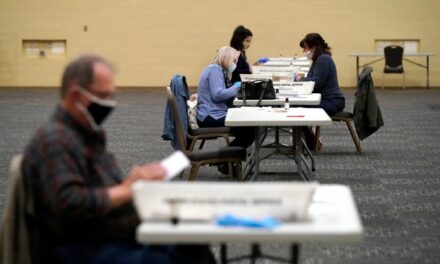We support our Publishers and Content Creators. You can view this story on their website by CLICKING HERE.
The results challenge current medical assumptions about brain injuries, coma, and vegetative states.
In a discovery that could change our understanding of consciousness and patient care, researchers have found that as many as one in four patients deemed unresponsive after brain injuries may actually be aware of their surroundings.
Many Unresponsive Patients May Actually Be Conscious
The study, published in the New England Journal of Medicine in August, sheds light on a condition known as cognitive motor dissociation (CMD), also called covert consciousness. The research, involving 241 unresponsive patients across several medical centers, including Columbia University Irving Medical Center and Weill Cornell Medicine, challenges our understanding of consciousness in patients with severe brain injuries.
There have been a number of recorded cases where someone appears to be in a coma following some type of head injury or cardiac arrest, Dr. Ted L. Rothstein, a neurologist in Washington D.C. affiliated with George Washington University Hospital and not with the study, told The Epoch Times. “But if you whisper, think of playing tennis, or think of your mother telling you such and such, certain parts of the brain might light up with functional MRI,” he said. “And that would indicate that these people are really in a minimally conscious state, not totally comatose.”
In light of the recent findings, Claassen and his team urge health care practitioners to develop effective communication methods with these patients. “We have an obligation to try to reach out to these patients and build communication bridges with them,” he added.
The implications extend beyond moral responsibility. The presence of cognitive motor dissociation may significantly influence a patient’s prognosis.
Previous research by Claassen’s group has shown that people with CMD are more likely to regain consciousness and achieve functional recovery within a year of their injury. The team’s findings suggest that CMD could be a more accurate predictor of recovery than factors such as the patient’s age or the cause of the injury.
The Limitations of Current CMD Testing
Claassen’s study highlights the limitations of current testing methods for identifying hidden consciousness. Detecting this condition through EEG or MRI is primarily limited to select academic medical centers with advanced technology and specially trained personnel.
The need for increased accessibility is crucial—especially given the potential for misdiagnosis in patients whose language comprehension may be impaired, according to Classen. This limitation could lead to false negatives when identifying individuals with CMD.
While there are currently no specific treatments for CMD, Claassen said he remains optimistic about future developments. “This study will likely trigger much larger efforts to search for treatments,” he said, noting a growing interest in supporting the recovery of patients who may have previously been overlooked.
Better Testing May Reveal Many More Patients Trapped by CMD
The study is important research that adds to our understanding of the concept of cognitive motor dissociation, Dr. Neha S. Dangayach, an associate professor of neurology and neurosurgery at Mount Sinai Hospital in New York, who was not associated with the study, told The Epoch Times.
The findings demonstrate how advanced tools like fMRI and continuous electroencephalography (cEEG) monitoring, a technique to monitor brain activity over an extended period, can be used to identify more patients capable of responding to verbal commands compared to traditional bedside clinical exams, Dangayach noted. This development has promising implications for neuroprognostication, the prediction of recovery from severe brain injury, she said.
“It tells us that we can’t rely on our bedside clinical examination alone when in doubt about a severe brain injury patient’s ability to regain consciousness,” she said. “We must make an effort to determine which patients might have CMD if we have access to advanced imaging tools like fMRI and monitoring tools like cEEG to improve detection of CMD.”
Dangayach said she found it “eye-opening” that even in this study, only 61 percent of eligible patients underwent fMRI testing, 74 percent had cEEG testing, and only 30 percent received both. “Despite that, CMD was detected in 25 percent of patients. I wonder if 100 percent of these patients had undergone advanced testing, would the detection of CMD be even higher?” she said.
Also, coma patients’ conditions tend to fluctuate, emphasizing the importance of repeated testing to improve accuracy in detecting consciousness and determining prognosis, she noted.
As the medical community’s understanding of cognitive motor dissociation evolves, it will need to address not only the symptoms and implications but also potential recovery pathways for those previously considered unresponsive. The emerging research could change neurocritical care and the lives of patients and their families facing the uncertainties of brain injuries.

 Conservative
Conservative  Search
Search Trending
Trending Current News
Current News 





